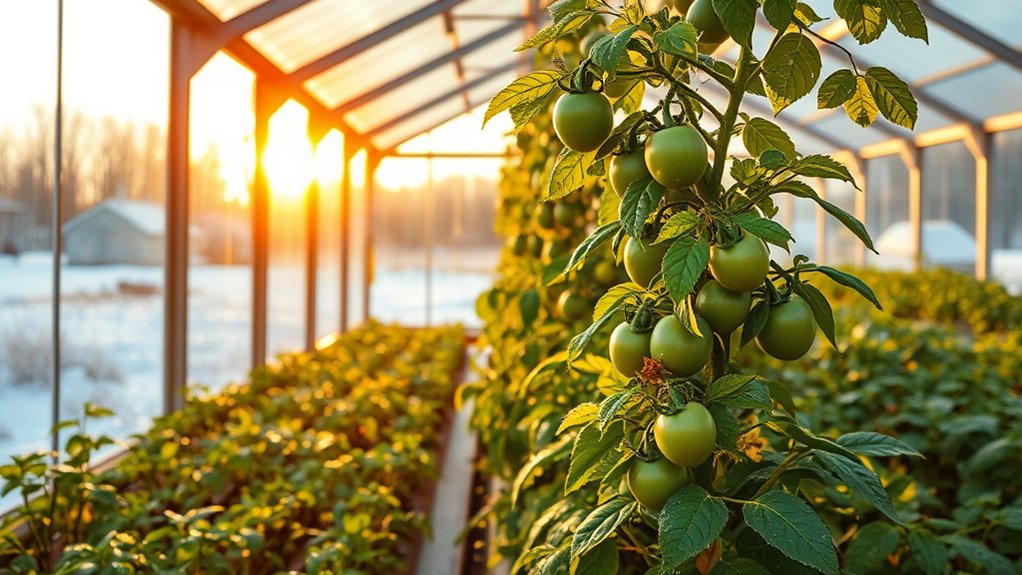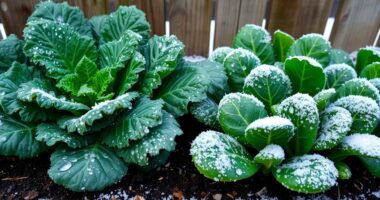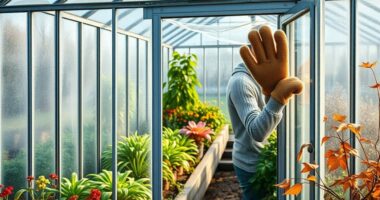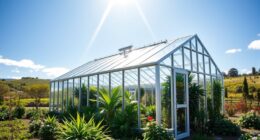By adding a greenhouse, you can extend your growing season and grow plants year-round, no matter your outdoor climate. It gives you control over temperature, moisture, and environment, supporting delicate and exotic species. Using tools like self-watering planters and propagation techniques, you’ll increase productivity and enjoy continuous harvests. Greenhouses also help you experiment with new plants and reduce resource use. If you’re curious about maximizing your gardening potential, there’s more to discover below.
Key Takeaways
- Greenhouses extend the growing season by providing a controlled environment for plants beyond outdoor limits.
- They enable cultivation of delicate and exotic plants that wouldn’t survive outdoor climate conditions.
- Using tools like seed-starting trays and self-watering planters supports early growth and continuous production.
- Greenhouses reduce seasonal gaps in fresh produce and promote year-round gardening activities.
- They enhance plant health and productivity through optimized temperature, humidity, and protection from pests.
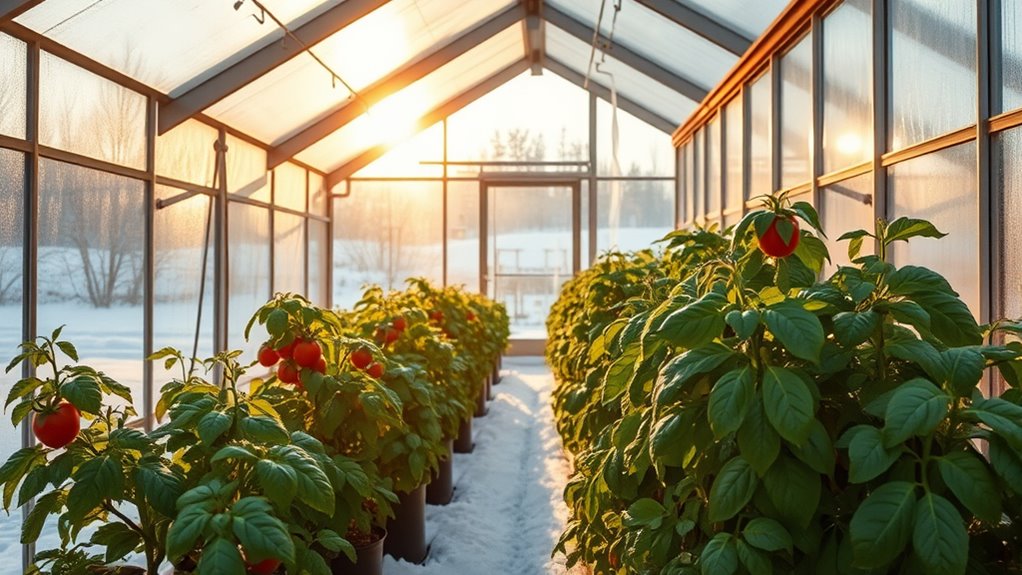
Season extension isn’t just about lengthening the growing period; it’s about improving your overall gardening strategy. When you incorporate indoor gardening and plant propagation, you gain more control over your plants’ development. For example, you can use seed-starting trays inside your greenhouse, providing warmth and consistent moisture, which helps seedlings thrive early in the season. As these young plants grow stronger, you can gradually expose them to outdoor conditions, avoiding shock and giving them a head start. Similarly, propagation techniques like grafting or rooting cuttings allow you to produce new plants that are adapted to your specific climate, increasing resilience and productivity. Utilizing self-watering planters can also help maintain optimal moisture levels, especially during the transition periods between seasons.
Furthermore, extending the season through a greenhouse means you can experiment with a wider variety of plants that might not normally survive your local climate. Fresh herbs, exotic vegetables, and delicate flowers become viable options. The ability to keep plants thriving longer also means fewer trips to the store for produce, saving you money and reducing your carbon footprint. With a bit of planning and the right tools, you can create a continuous cycle of planting, growing, and harvesting, turning your greenhouse into a year-round garden.
In essence, combining indoor gardening with plant propagation in your greenhouse empowers you to grow beyond the outdoor calendar. It transforms your gardening space into a versatile, productive oasis where you control the seasons and enjoy fresh, vibrant plants for longer than you ever thought possible.
Frequently Asked Questions
What Are the Best Crops to Grow in a Greenhouse Year-Round?
You can grow a variety of greenhouse vegetables and year-round herbs to maximize your space. Leafy greens like lettuce and spinach thrive indoors, providing fresh salads all year. Tomatoes and peppers also do well if you maintain proper temperature and humidity. Don’t forget about herbs like basil, parsley, and cilantro, which flourish in greenhouse conditions. By selecting these crops, you’ll enjoy fresh produce and herbs regardless of the season.
How Much Does It Cost to Set up a Greenhouse for Season Extension?
The cost to set up a greenhouse for season extension varies widely, typically ranging from $1,000 to over $10,000 depending on size, materials, and features. You should start with a detailed cost analysis and budget planning to determine what fits your needs and financial situation. Basic structures like DIY kits are more affordable, while high-end, automated greenhouses require a larger investment. Proper planning helps you maximize your investment.
What Are Common Greenhouse Heating Options?
Imagine a cozy haven where your plants flourish despite winter’s chill. You’ll find common greenhouse heating options like electric heaters, gas furnaces, and infrared systems, each offering reliable temperature regulation. To maximize energy efficiency, choose options that suit your greenhouse size and insulation. These systems keep your plants warm and thriving, transforming your greenhouse into a year-round oasis where nature’s limits no longer apply.
How Do I Prevent Pests in a Greenhouse During Off-Season?
To prevent pests in your greenhouse during the off-season, start with thorough greenhouse sanitation by removing debris and cleaning surfaces regularly. Use pest prevention strategies like installing insect screens and inspecting new plants before introducing them. Keep humidity and temperature levels controlled, as pests thrive in certain conditions. Regularly monitor plants for early signs of pests, and act quickly with organic or chemical controls to keep your greenhouse pest-free year-round.
Can I Automate Climate Control in My Greenhouse?
You can definitely automate climate control in your greenhouse. Think of it as having a watchful eye on your plants 24/7. With temperature sensors and automated watering systems, you can easily maintain the perfect environment. These tools help you respond swiftly to changes, saving time and effort. By integrating these systems, you guarantee consistent conditions, allowing your plants to thrive year-round without constant manual adjustments.
Conclusion
By extending your growing season with a greenhouse, you can enjoy fresh produce well beyond the outdoor calendar. It’s a smart way to maximize your gardening efforts and enjoy bountiful harvests year-round. Remember, “The early bird catches the worm,” so start planning now to make the most of your greenhouse. With a little effort, you’ll reap the rewards of an extended growing season and enjoy nature’s bounty for months to come.
